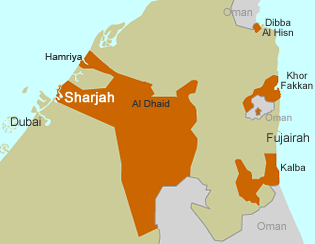Cambio (2020-2023) is an ongoing project by Formafantasma, which investigates the wood industry's origins in colonial bioprospecting in the nineteenth century. It explores the supply chain's environmental impacts and seeks to expand design beyond finished products by integrating forestry, legislation, science and activism. Through videos presented as part of a multidisciplinary exhibition, they ask how design can address environmental issues through collaborative and informed approaches.
Highlighting the issue of waste colonialism, clothing brand BUZIGAHILL - who creatively transform second-hand clothing waste from the West and sell it back to the Global North - reconstructs their production studio and stage RETURN TO SENDER. This defiant performance showcases the resourcefulness of Sub-Saharan Africans in harnessing waste as a valuable resource. Sharjah plays a significant role in the second-hand clothing supply chain, and bales of unwashed second-hand clothing have been specially acquired for the performance from a sorting centre in one of Sharjah’s Free Zones, where migrant workers unpack, sort and repack unwanted clothes collected in Europe.
Power Shifts is a photographic installation by Dia Mrad that looks at Lebanon's economic collapse using aerial imagery of the proliferation of solar panels on rooftops in Beirut. Viewed not just as objects, the panels become manifestations of the crisis itself, inviting viewers to reflect on not only the visual impact of the economic collapse on the cityscape, but also its profound effect on the lives of its residents.
In response to Sharjah’s evolving national identity and cultural significance in the UAE, Olalekan Jeyifous presents SHJ 1X72 - 1X89, a speculative work that offers a retro-futurist vision of the region. Set on Sharjah’s Bank Street and its ‘heritage areas’, Jeyifous imagines an alternative architecture that embraces sustainable practices and local typologies, in tune with the climatic conditions of the region and the social rhythms of its inhabitants.










